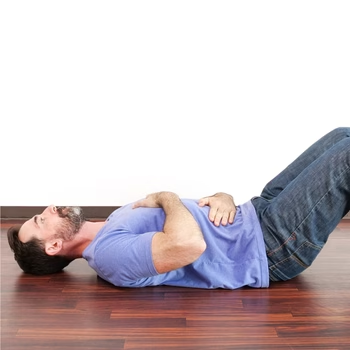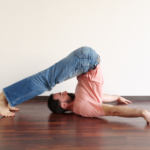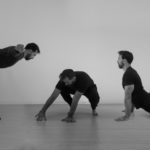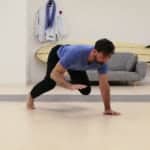You’ve probably heard that breathing exercises can help you recover faster, reduce stress, and make your workouts feel easier. Sounds great! But how exactly does that work?
The simplest answer is that when you learn how to control your breath, you stop wasting energy, improve your stamina, and recover quicker between efforts. No mysticism, it’s straight up physiology. And it works because just like every other physical process, you can train it and improve. You don’t need to join a monastery or use fancy equipment. You just have to learn how to pay attention and practice.
Breath Regulation Is The Key
The goal of a breathing exercise is to give you control over your body. You’re not just practicing breathing for the sake of it.
Nasal breathing (versus mouth breathing) plays a big role here. If you’re always defaulting to open mouth breathing or bracing during movement, that’s a sign you’re likely pushing too hard and missing the opportunity to self-regulate.
To show you how simple it is to take control and turn your focus to nasal breathing, Ryan demonstrates a simple exercise you can do now, as well as how it should be incorporated with exercise.
Now, let’s get into why nasal breathing is so important.
Nasal Breathing As Your Baseline
When you breathe through your nose:
- You shift away from sympathetic (fight or flight) to your parasympathetic nervous system (rest + recovery)
- Your heart rate lowers and you reduce stress hormone output
- Your diaphragm works the way it’s designed to
You don’t need to stay in that nasal zone 100% of the time, but it’s a reliable marker for how you’re handling the work. Breath gives you instant feedback once you know what to look for.
Learning how to regulate your breath is a simple process. All you have to do is practice.
Why Breathing Through Your Nose Matters
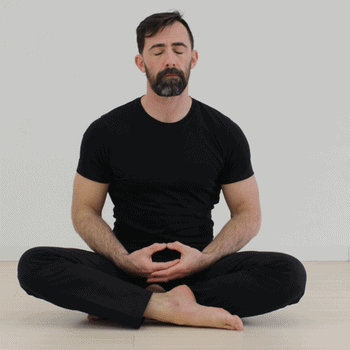 The research tells us that excessive mouth-breathing is associated with higher stress levels, lower quality sleep, and having less energy. If you have an obstruction in your nasal cavity (usually caused by colds, allergies, sinus infections, or medication), it can make breathing through your nose harder, so the default action is to breathe through your mouth.
The research tells us that excessive mouth-breathing is associated with higher stress levels, lower quality sleep, and having less energy. If you have an obstruction in your nasal cavity (usually caused by colds, allergies, sinus infections, or medication), it can make breathing through your nose harder, so the default action is to breathe through your mouth.
Nasal breathing helps activate the parasympathetic nervous system, which is responsible for relaxation and recovery. Parasympathetic means ‘rest and digest’ and sympathetic means ‘fight or flight.’
Slower, deeper breaths through your nose calms your nervous system and slows your heart rate. And faster, yet more shallow breathing through your mouth can increase the stress response, and delay recovery in the short term immediately after an intense effort. When you learn to control your breath through nasal breathing, you’ll be able to bounce back quicker during and after your workouts.
Better breathing means better recovery
In many meditation practices, they use breath work techniques that encourage you to take deep belly breaths followed by long, slow exhales. This practice trains your nervous system to get out of the stressed state, and flips into rest and relaxation mode.
It gets more complicated when you’re exerting yourself, so it’s time to go over that.
Breathing as it Pertains to Skill and Movement Mastery
We see breathing as way to gauge how you’re doing with your exercise and how hard or easy it is. Ultimately, it’s an indicator of mastery and self-regulation.
Here are the three phases we all pass through in our training:
- Bracing and holding your breath.
- Open mouth breathing.
- Nasal breathing.
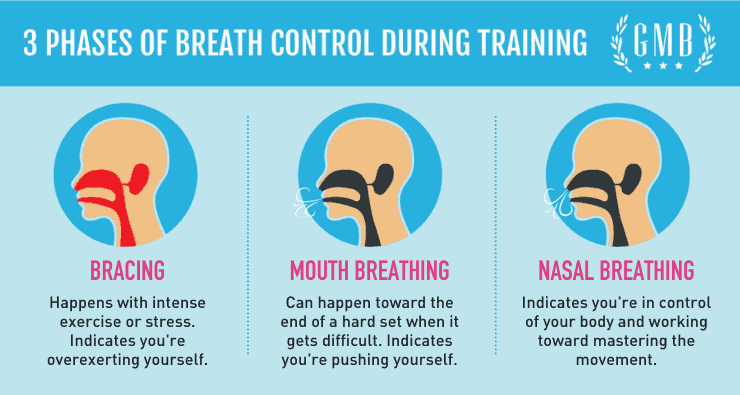
Phase 1: Bracing and Holding your Breath
You know what this is like. Think of when you run up a flight of stairs, or pick up some heavy furniture. When a movement gets difficult, you brace your core and hold your breath. And this also typically happens when you’re learning a new move because it’s unfamiliar. It also occurs when you’re pushing yourself too hard.
This is fine when you’re getting your bearings, but it’s an indicator that the progression you’re working on is too difficult, and you’d be better off dropping it down a notch. In all of our programs, we start with an assessment to help you determine which variation to start with, as well as how to regress them if you need to.
Phase 2: Open Mouth Breathing
Open mouth breathing will often happen at the beginning stages of moving beyond your comfort zone. This is good because it’s how you make progress! And even if the movement is tough, it’s still a good level to be at when you’re training the movement safely and with good form.
An example would be during the “push” phase of our programs where you start to practice the movement for a set period of time. Toward the end of the 45-second set, you may begin to breathe through your mouth. This means you’re right at the edge of your breath control.
Now, this doesn’t mean you should never breathe through your mouth. This is necessary when you are really working hard and experiencing oxygen debt. Say in a hard run or other sports where you are giving it your all. But in the context of training for skill and motor control, if you can’t move with good form, it’s best to modify the movement or take a short break to catch your breath and try to breathe through your nose again.
💡 For example, in Elements, we emphasize controlled breathing during your work sets, and if it’s still hard after a break, you might want to drop down to an easier variation to maintain control of your breath for that exercise.
Phase 3: Nasal Breathing
Ultimately, this is where you want to end up. Being able to breathe through your nose during movements and long holds is when you know you’re mastering the exercise. But when you end up here, it’s a good sign it’s time to challenge yourself again.
We want nasal breathing happening as much as possible but you don’t need to have perfect nasal breathing to move onto the next variation. As long as the movement or hold is with good form and you can control your breath without bracing or huffing and puffing, you’re likely ready for the next progression.
How to Get Started with Focused Nasal Breathing
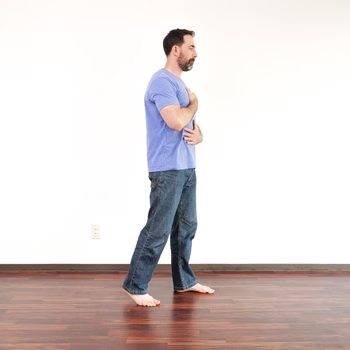 Gaining true control over your breath starts with awareness all throughout your day. Check in with yourself right now, are you breathing through your nose or your mouth?
Gaining true control over your breath starts with awareness all throughout your day. Check in with yourself right now, are you breathing through your nose or your mouth?
If it’s through your nose, great one less thing to worry about! If it’s through your mouth (especially while sitting or relaxed) it’s a habit worth changing. Mouth breathing during rest ramps up your sympathetic nervous system (the one responsible for the fight-or-flight response). That makes it harder to recover, sleep deeply, or stay calm when things get stressful.
So the first step? Close your mouth. Not forever and not in every circumstance. Just regularly enough that it becomes your default. You don’t need special exercises to start this. Just notice it throughout the day; while working, walking, driving, or climbing the stairs. If you catch yourself mouth-breathing, just relax and reset. Stop for a second, make a mental note and close your mouth.
It’s not always easy, especially if this is an old habit, but like any skill, consistency builds comfort. And once nasal breathing becomes more natural, you’ll start to notice it in your workouts.
Everything starts outside of your workouts. In short, close your mouth when breathing. When you’re relaxing, check in with yourself periodically.
Will Optimizing Your Breath Transform Your Life?
In short, no.
Unless you have some major issues like sleep apnea, which might require medical intervention or a CPAP machine to correct. But aside from these conditions, breathing properly is easy to learn and pretty basic at its core once you remove all the mystery behind any specific method.
The Truth™ About Breathing Exercises:
There’s no shortage of methods out there promising to “unlock your potential” with a trademarked breathing style. Hyperventilating, breath holds, cold exposure, and honestly it does alter your perceptions, and make you feel powerful and energized in the moment.
But the key words there are “in the moment”, those effects are temporary tricks. Breath training only helps if it becomes a habit. You don’t want it to be just when you are chasing a high, it should be something you do as routinely as brushing your teeth.
It’s Not A Hack, It’s A Skill
At first, breath control might feel awkward or limiting, especially during training. That’s normal, but with repetition, it becomes automatic. You’ll regulate your effort more naturally, recover faster, and feel steadier when the work gets hard.
That’s what we care about. Breath that works where it matters. Just like everything we do with all of our programs, especially Regulator, it’s about improving how you move, feel, and recover. That means real carryover into your daily life.
So begin now with paying attention. Check in while you’re working, walking, and dealing with stress, and start by taking a few slower nasal breaths. Develop this control, be patient and keep at it! It doesn’t take enormous amounts of effort, it just takes practice.
We’ll Show You The Exact Steps We Use To Start Breathing Better Now
Breathing better during your workouts is good. But it’s breathing well throughout your day that really makes a difference.
That’s why we built Respiration, a focused, easy-to-follow program that teaches you how to practice breathing to perform and recover better.
When you get to practice you’ll find:
- 34 structured breathing sessions (5, 10, and 15-minute formats)
- Clear detailed performance instructions
- Built-in progression to encourage consistency
You can do it in 15 minutes a day; on your rest days, after a workout, or whenever you need a reset.
Take Control Of Your Breath
Breathing better helps us to move and recover well, but like any skill it requires some time and practice. Respiration gives that structured, progressive practice. Now it’s just up to you to put in the time.

